Year 3 and 4 spelling list – Worksheets, tests and more
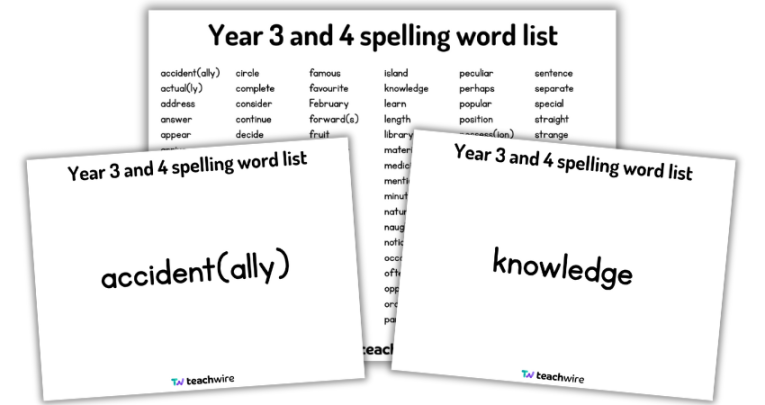
Help your Year 3 and 4 students nail those statutory spelling words with this selection of classroom resources…

- by Teachwire
- Classroom expertise and free resources for teachers
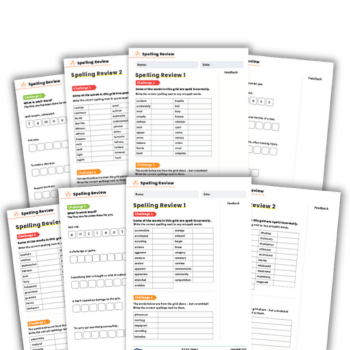
Explore the Year 3 and 4 spelling list through our spelling worksheets and resources for LKS2. We cover efficient methods and typical errors in teaching spelling in KS2 and offer advice on assisting students who are struggling…
(If you’re looking for Year 5 and Year 6 spelling lists, we’ve also got you covered.)
Year 3 and 4 statutory spelling word list
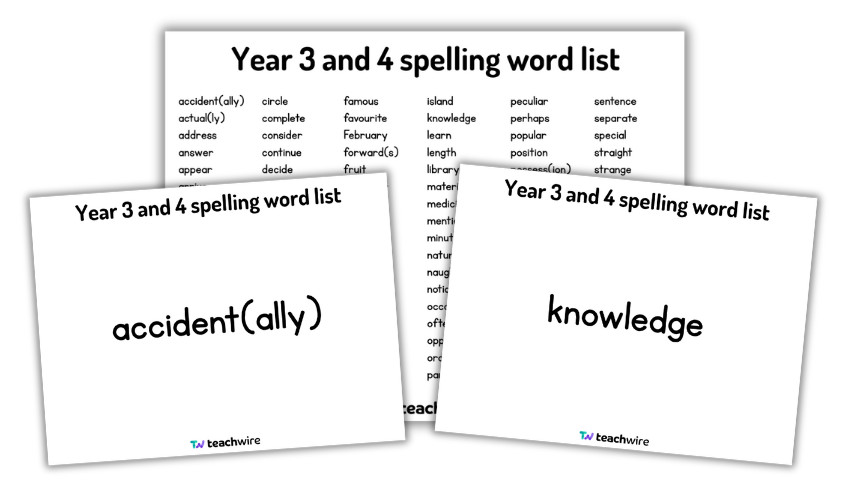
What better place to begin than with the essential list of 100 common exception words that Year 3 and 4 students are required to spell correctly.
Assuming you haven’t memorised them, from ‘accidentally’ to ‘women’, we’ve prepared straightforward PDF, editable Word document, and PowerPoint versions of the spelling list for Year 3 and 4.
Spelling worksheets for KS2
100+ free worksheets
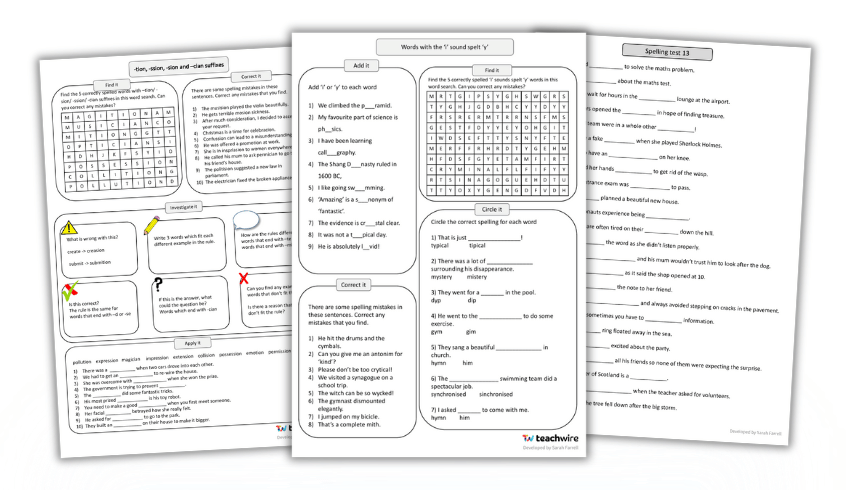
This extensive pack of ready-made spelling games worksheets for KS2 features a huge number of activities, including for prefixes, suffixes, spelling patterns for sounds, homophones and near-homophones, and ‘spot the spelling mistakes’ games.
Year 3 and 4 spelling revision worksheets

These free printable spelling worksheets provide a great way to practise, revise and test the Year 3 spelling words and Year 4 spelling words from the National Curriculum Spelling List. All of these words are covered across five activity sheets, each containing three different types of spelling challenge.
Year 3 spelling resources
‘ei’, ‘eigh’ and ‘ey’ worksheets
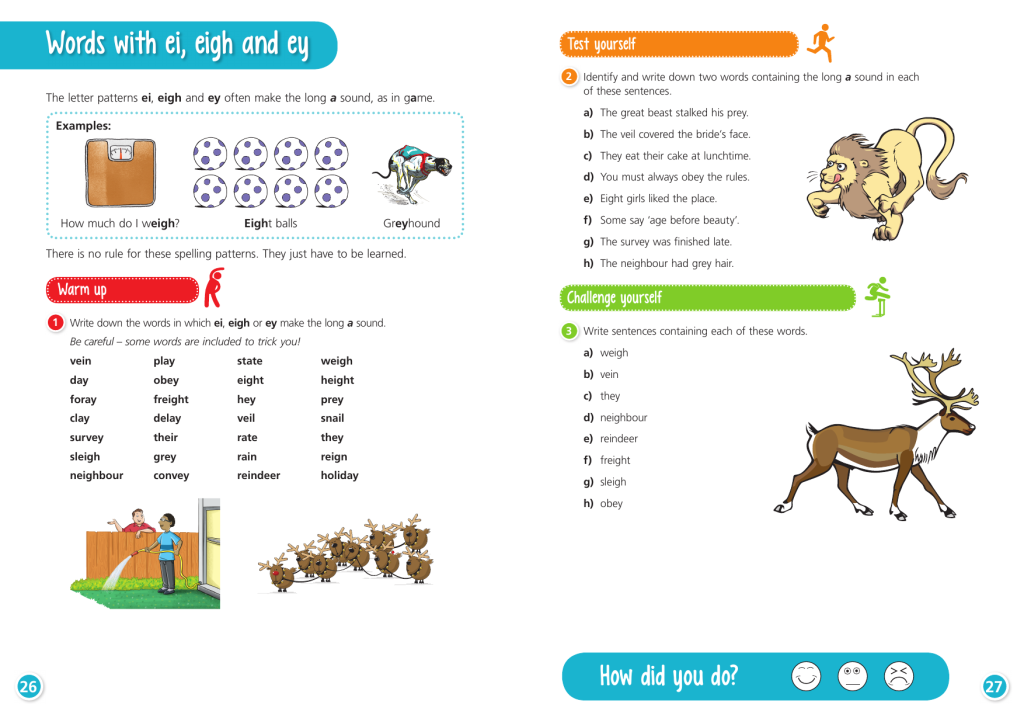
This free six-page resource is from Keen Kite’s Ready, Steady, Practise! – Year 3 Spelling series. There are questions and answers plus guidance for pupils.
Year 3 spelling patterns classroom posters
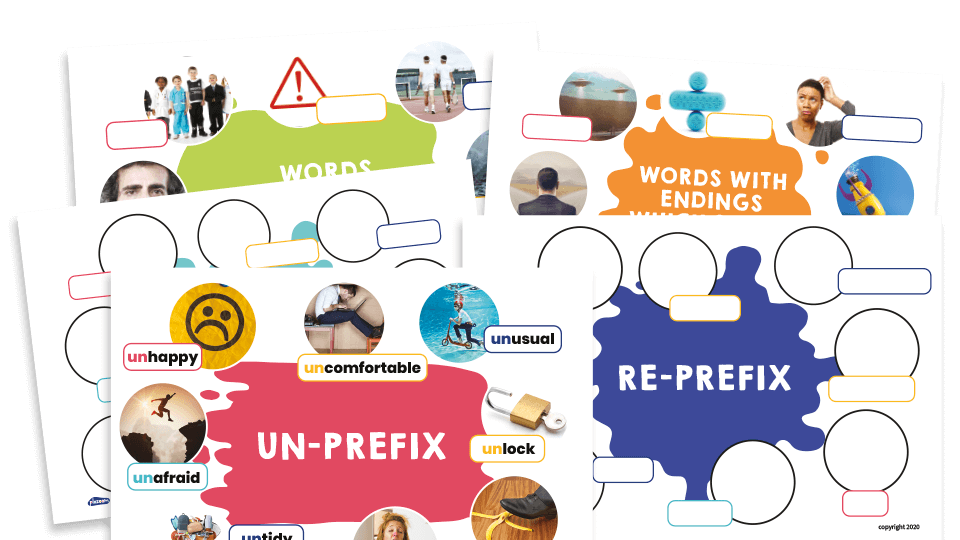
Enhance your KS2 classroom displays with this set of 14 colourful posters from Plazoom. They’re based around Y3 spelling patterns. Each poster shows the spelling pattern surrounded by eight eye-catching images illustrating words that use that pattern.
Year 3 spelling word lists
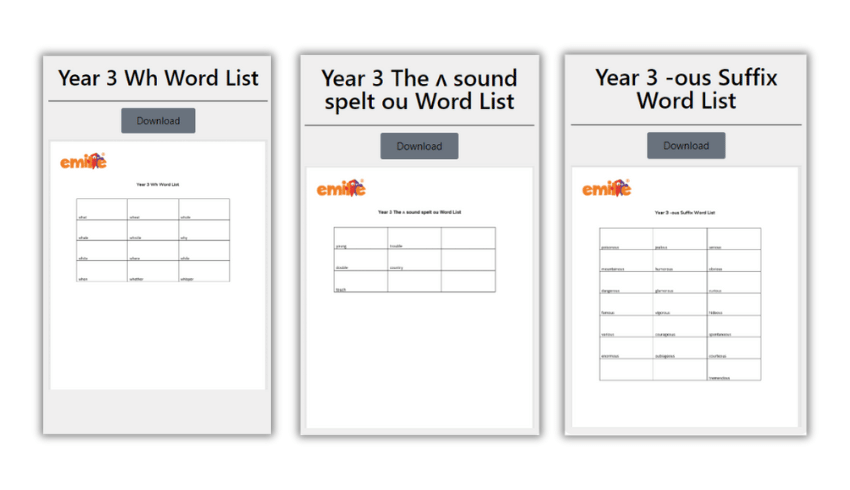
These downloadable lists of Year 3 spelling words are sorted into various groups. There’s a ‘wh’ words words list, one for words with the suffix ‘ation, as well as ‘ch’ words, ‘-ing’ words and more.
Year 4 spelling resources
Spelling bingo
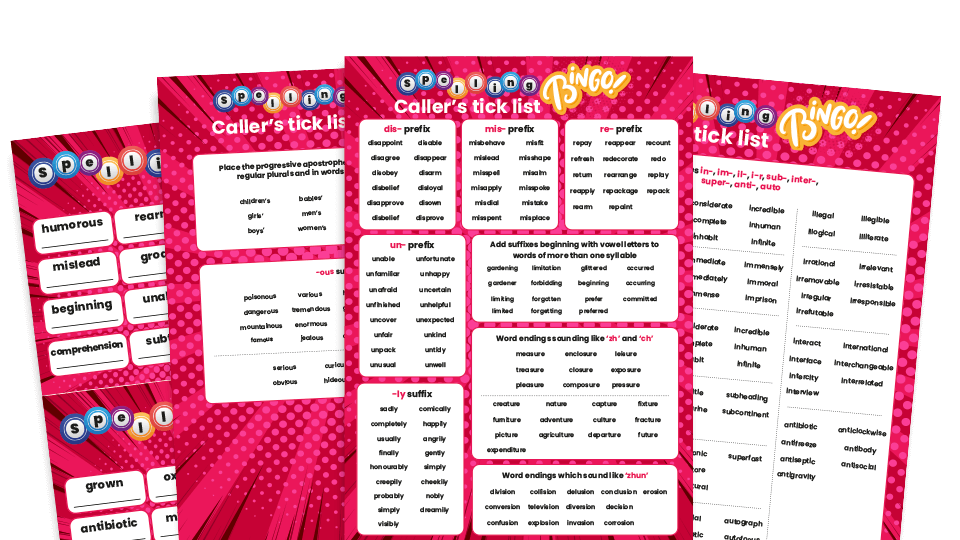
This spelling bingo game from Plazoom is a fun way to support children in Year 4 and above to practise and master key spelling patterns. The game can be played as a class or in small groups.
Custom word lists
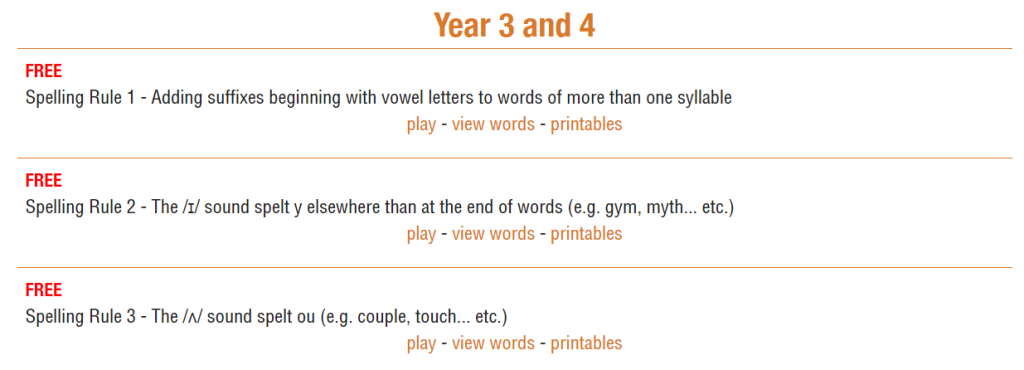
At SpellingFrame you pick a year group, then a spelling rule, then get a word list to either view, print or test yourself with online. In the interactive tests, children can opt to have the entire sentence read out, or just the word they need to spell.
More Year 3 and 4 spelling list resources
Homophones PowerPoint for KS2
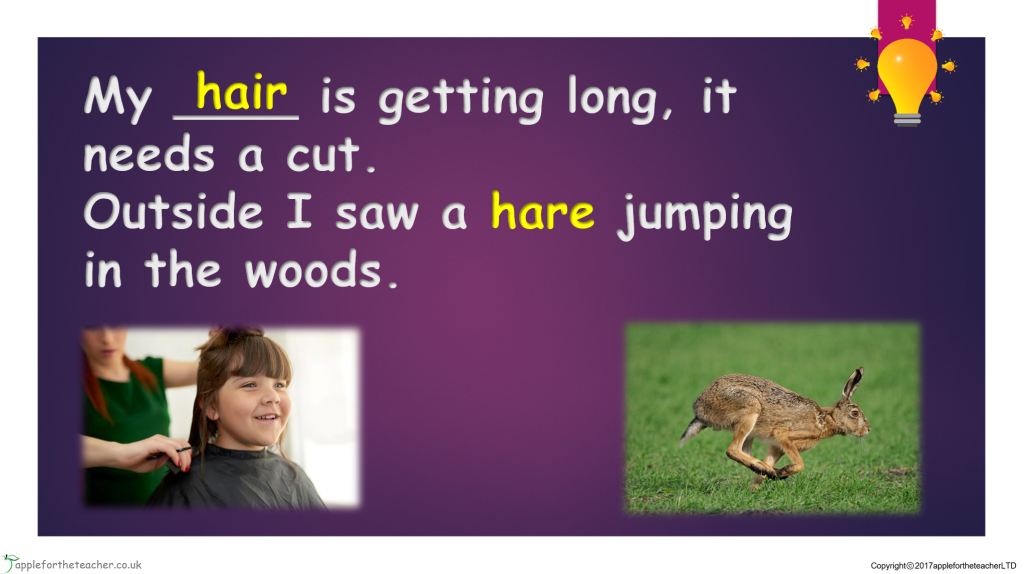
This engaging free PowerPoint presentation is a great visual tool for helping children understand what homophones are and how a word which sounds the same can have other spellings and meanings.
Year 3 and 4 statutory spelling words practice packs
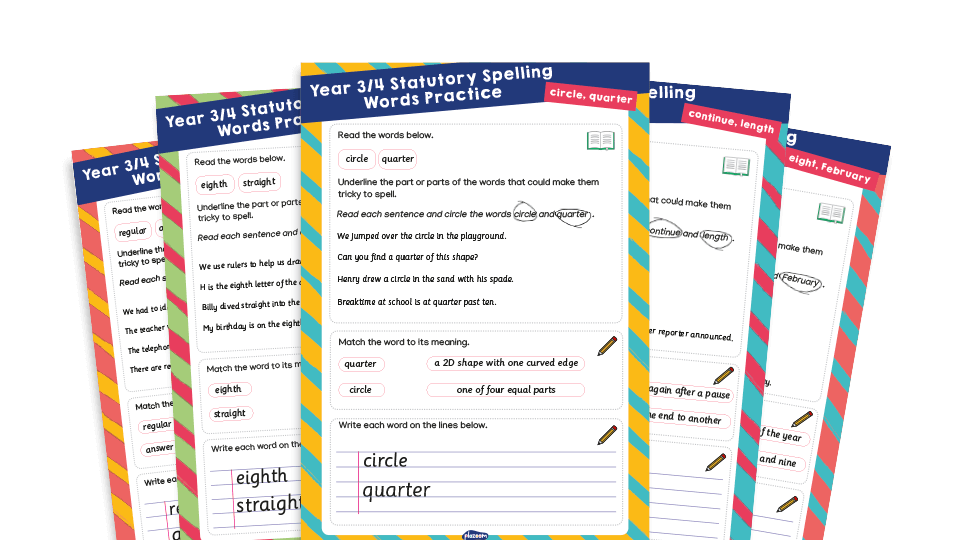
These lower-KS2 statutory spelling word packs from Plazoom allow pupils to practise reading and spelling a selection of the statutory spellings for Year 3 and Year 4.
Each worksheet includes two words for pupils to read, spell and understand, with an opportunity to practise handwriting, making them perfect for independent practice during spelling lessons, for use as revision activities and for home learning.
Strategies for teaching spelling, from a poor speller

Look, say, cover, write, check didn’t work for Ruth Baker-Leask, but these strategies would have made all the difference…
Spelling tests caused me anxiety as a child; no matter how diligently I learned the words I always got a low score.
Some people are lucky and have a visual memory that preserves the mental image of a word perfectly. They can LOOK at a word, SAY it, COVER it over, WRITE it and CHECK it and the word is theirs. When I use ‘Look, Say, Cover, Write, Check’, the moment I close my eyes the word is lost forever.
Yes, I am the annoying child who can’t copy from the board for the same reason! My memory, both short and long term, needs more than a visual stimulus.
It needs something physical, a silly story, an image, rhyme or ditty. My teachers didn’t realise this so, to set the record straight, here are some strategies that would have worked.
Make sure talk is central
Children need to develop a ‘spelling voice’ in their heads; a voice that considers alternatives, notices root words, and recalls rules and tricks. Talk is vital to this process.
Spellers are linguistic problem solvers; a skill they develop through interactions with other learners. Try paired spelling tests that allow children to discuss how they have spelt a word before deciding on the correct spelling. Children may remember the conversation more efficiently than the strategy they used to learn the word.
Forgive a first draft
If children know you are going to mark their first draft for spelling errors, they will be more conscious of their spelling and less aware of the quality of what they are writing (composition).
Encourage children to check their spellings as they go along but don’t be too hard on them if they make transcriptional mistakes the first time around.
If they know they have spelt a word incorrectly, encourage them to draw a line under it; you can help them with the spelling at a more appropriate time, without disturbing the flow of the writing.
Use peer editors
In real life, writers have editors who ensure their published work is accurate and sounds good. Why? Because your brain finds it almost impossible to notice your own errors; it fills in the missing pieces and ignores the mistakes it thought were correct in the first place.
If adults need editors, so do children. Pair a great speller with a poor speller and encourage them to discuss why words are misspelt and share their strategies for correcting them.
Trending
Give writing a wider audience
As we know, familiarity breeds contempt, and I’m afraid that children don’t see the jeopardy in misspelling a word if you’re the only person who knows about it.
If I’m writing a quick shopping list for my husband and I misspell a word, he may tease me, but there is no real consequence. However, if I write a tweet to advertise some training I’m delivering, and there is a spelling error, then I’m unlikely to get many attendees!
The wider the audience, the more important accurate spelling becomes. Post letters, publish writing online, create anthologies for the library and poems for a display; in other words, give children a reason to care about the accuracy of their spelling.
Match spelling strategies to pupils
Teachers are great at spotting errors but spend less time analysing their cause. Error analysis is vital; once you know why children are misspelling words, it is easier to match the appropriate strategy to their need.
Making word pyramids, drawing the shape of a word or even highlighting the tricky bits are great visual strategies for some children but not all (they would have been no help to me).
I really struggle when words contain guttural, unstressed sounds called schwas ‘ə’. I have to guess the correct letter because I can’t see or hear what it is. If we look at the word ‘definitely’, you can hear the first vowel (phew!), but the next two are schwas, and the final vowel is silent (grrr!). I remember such words using:
Auditory strategies
- Stressing the unstressed vowels so I can hear where and what they are. Eg d e f ‘I’ n ‘I’ t ‘E’ l y
- Making up a mnemonic eg I definitely have two eyes (‘i’s) and 2 ears (‘e’s)
- Saying each part of the word as it is spelt, eg ‘def-i-ni-tely’
- Saying every single letter out loud – giving it a rhythm/tune that I can repeat back to myself
Physical strategies
I once became so fed up with the embarrassment of forgetting to write the silent ‘e’ at the end of the word ‘before’ that I drew an ‘e’, with my finger, on the palm of my hand, over and over again.
Now when I write the word ‘before’ I remember this action and write the final ‘e’, even if my brain isn’t keen on the idea. Some children will need to do something physical to remember silent letters or difficult letter patterns such as:
- Writing the word repeatedly in the air
- Writing it on someone’s back
- Turning it into a collage, cutting each letter out of sticky paper, using a different colour for the tricky bit
Knowledge of spelling rules
We usually keep the final ‘e’ when adding a suffix that begins with a consonant (the exception being words that end in ‘le’ when we usually drop the ‘e’). ‘Definitely’ fits with this rule. Spelling rules work well for some children who can’t see words in their heads. Teach them well and repeat them often!
Ruth Baker-Leask (@RuthBakerLeask) is director of Minerva Learning and chair of the National Association for Advisers in English (NAAE).
Spelling lesson example
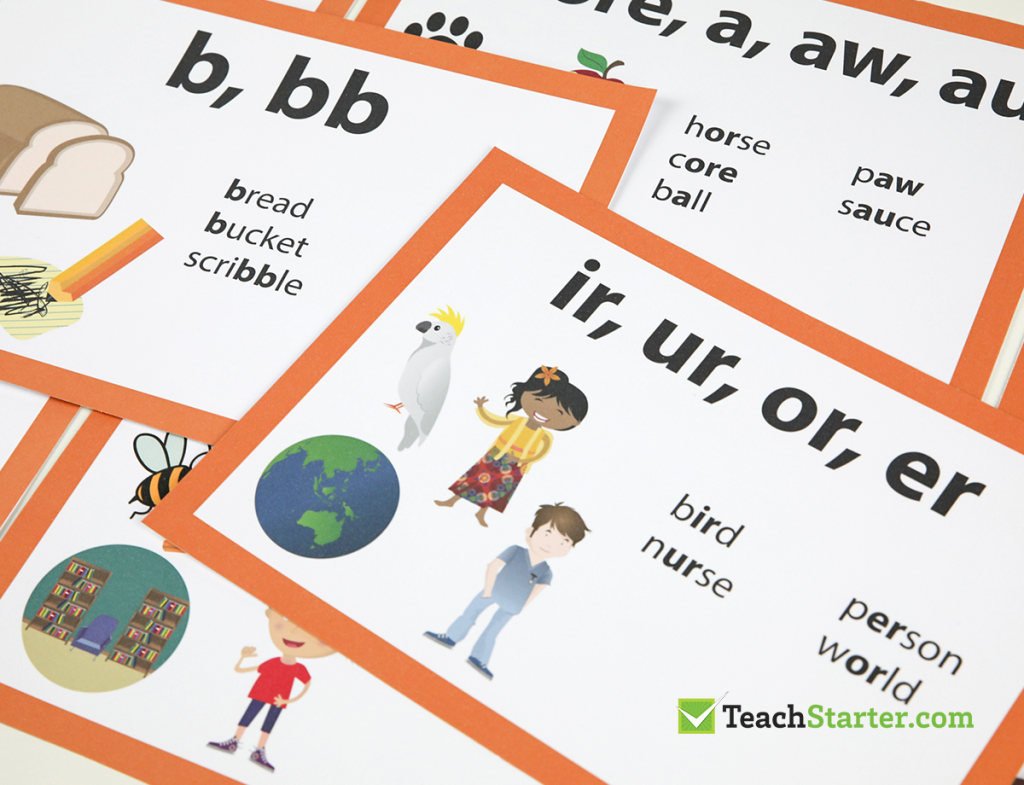
Plan and manage a primary school spelling programme with these useful ideas from Holly Mitchell…
Developing a spelling programme within the classroom is not about students learning a list of words at home and taking a spelling test every Friday to determine how much they have managed to rote learn. Spelling is learning about words! It’s about multiple and meaningful exposures to the English language.
Ideas for teaching spelling
Focus on one phoneme a week and the different ways to spell that phoneme. At the beginning of each week, provide students with a suitable word list catered to their spelling ability.
Don’t send the list home. This is simply a list of the words that you use to learn and discover a new phoneme through fun spelling activities. Here is an example of a spelling list for the phoneme oi/oy:
Lower ability
- toy
- coin
- oil
- joy
- noise
Middle ability
- Above words, plus…
- boy
- join
- enjoy
- voice
- soil
Higher ability
- Above words, plus…
- choice
- spoilt
- destroy
- oyster
- annoy
Split the class into three varying ability groups. Make sure the higher ability words are linked to the same phoneme or are topic words for different units you are doing.
Spelling lesson ideas
Once you’ve provided each student with their spelling words for the week, explicitly teach the spelling pattern. Then ask children to complete a whole-class activity with their provided spelling words.
Teach Starter has a Generic Spelling Activity Worksheet Pack that contains some ideas for whole-class spelling activities.
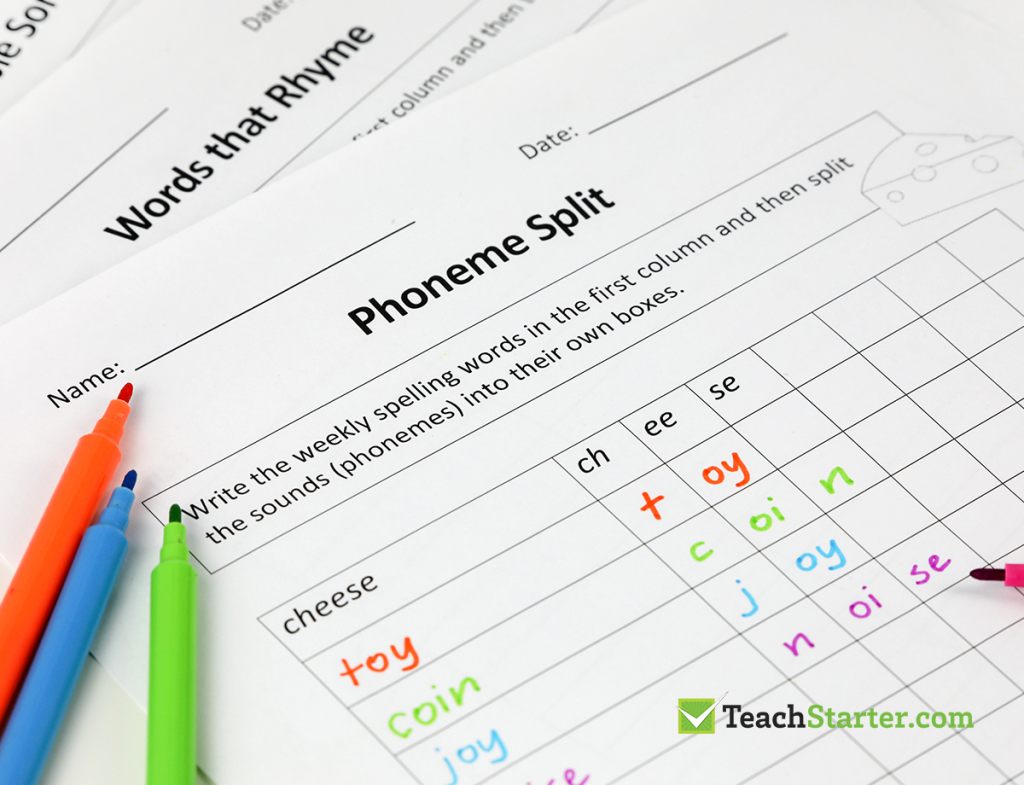
During the week, use a range of spelling grids, phonics games and activities focusing on the weekly phoneme and list of words.
Make sure students are surrounded by visual reminders of the different phonemes and spelling rules that they’ve learnt.
Holly Mitchell is a qualified early years educator and digital content marketer at Teach Starter. Browse our round-up of spelling games.










